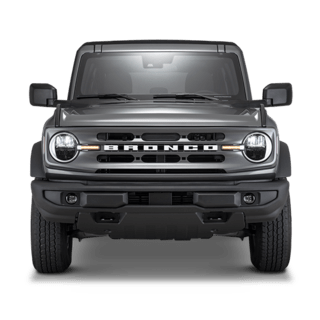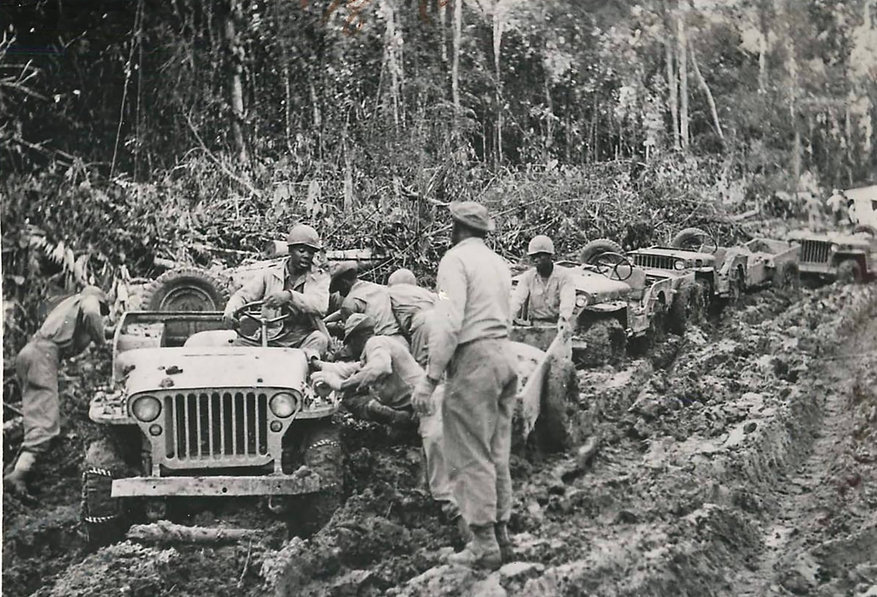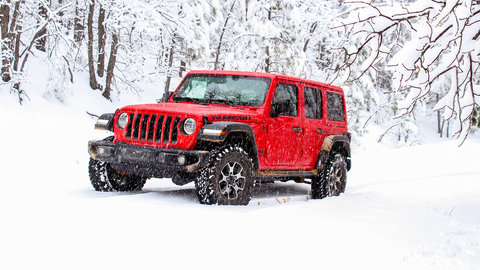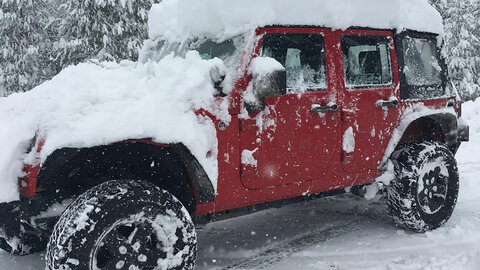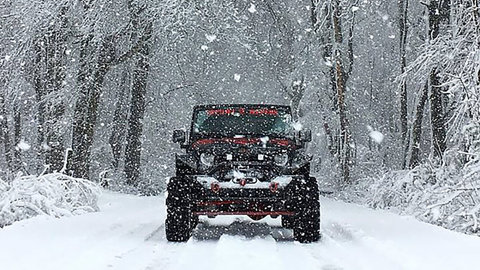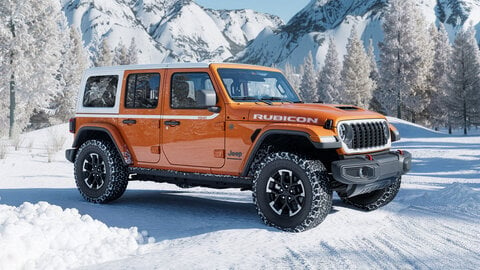by Matt Konkle
Quadratec Channel Editor
Mud deep enough to swallow a Willys Jeep. Malaria-carrying mosquitos. Jungle everywhere. Leeches. Ticks. Triple-digit temperatures.
Welcome to Stilwell Road.
Simply a horrid stretch of land from India to China, through Burma.
It was not the kind of place you went willingly. You were ordered there. And as World War Two raged, the completion of this road became paramount as the allies searched for ways to move supplies between India and China via land, rather than a dangerous air route over the Himalayan Mountains.
Tasked to complete this project, among a host of local workers, were 15,000 United States troops—the majority of them African-Americans that consisted of six companies, a headquarters, service, four combat engineer units and a healthy mixture of bulldozers and Willys MB vehicles.
In celebration of African-American History Month, Quadratec pays homage to these brave men and woman who fought horrific conditions day after day, all while being subjected to nearly non-stop racial discrimination.
They called it the Ledo Road then, back in late 1942 when construction began just outside Ledo, India. Japan had recently cut off the Burma Road, and now precious supplies that Chinese troops needed to push back against the Japanese, had to be airlifted over the eastern end of the Himalayan Mountains. It was a dangerous flight called ‘the hump’ because of unfavorable weather conditions, constant turbulance and violent winds.
Someone decided this new road, from Ledo to Kunming, China, would be able to safely move more material tonnage between these two points than the airlifts, and at a smaller cost. However, building the thing turned out to be anything but easy, or safe, over the course of the next two years.
The road’s construction, even in the best of conditions, often meant these African-American units spent 12-14 hour days, seven days a week, clearing out dense jungle, cutting through roots, trees and branches that were often infested with mites and ticks, and avoiding mosquitoes or leeches that carried malaria and other diseases. It also involved humid temperatures that would often reach 115 degrees Fahrenheit. A five-month monsoon season didn’t help either, which normally dumped around 140 inches of rain over that span.
Additionally, African-American soldiers working on the road were often given second-hand equipment such as worn shovels, dull picks, and bulldozers that needed repairs. Thankfully, they were able to utilize a contingent of Willys MB Jeeps to help negotiate the ever present deep mud fields, ferrying supplies from one section of construction to another. Although, sometimes even the vaunted Jeeps had issues traversing the thick, soupy mud—requiring multiple soldiers to hand-pull the vehicles through.
Besides these difficult conditions, African-American soldiers were also subjected to racial discrimination from other U.S. and British units. For example, on their journey from the United States, African Americans were forced to bunk in the lowest levels of their transport ship’s hull, and often had to shower with sea water. Their meals throughout the journey, as well as during construction, often consisted of hardtack, beans, and cold pork, which were of considerably less quality than the rations supplied to white soldiers and officers.
Despite all these issues, construction continued at a frantic pace as the soldiers cut openings through the jungle, over ravines and mountain passes and past innumerable rivers. Just over two years from its start, the Ledo road completed its objective in January 1945—with the first trucks reaching Yunnan, China, on January 28th.
In all, the U.S. spent around $149 million to build the 1,079 mile road. It was also paid for by the lives of 1,100 American casualties; earning the project the title ‘Man a Mile Road’.
Shortly after its completion, Ledo was renamed ‘Stilwell Road’, after Commander of the China-Burma-India Theater, Army Gen. Joseph W. Stilwell. However, that transformation did not include any description or written records on the African-American individuals or companies that ensured the successful construction of the road.
In fact, none of the soldiers ever received any recognition for their efforts when they returned stateside. It was not until 2004 that African American soldiers who built the Ledo Road were honored. During an African American History Month observance at Florida A&M University, the U.S. Department of Defense publicly recognized African American survivors and their work in both India and Burma. By then, however, most of the veterans were dead and only six attended the ceremony.
African American History Month is an annual celebration of achievements by African Americans and a time for recognizing their role in U.S. history. Since 1976, every U.S. president has officially designated the month of February as Black History Month.







